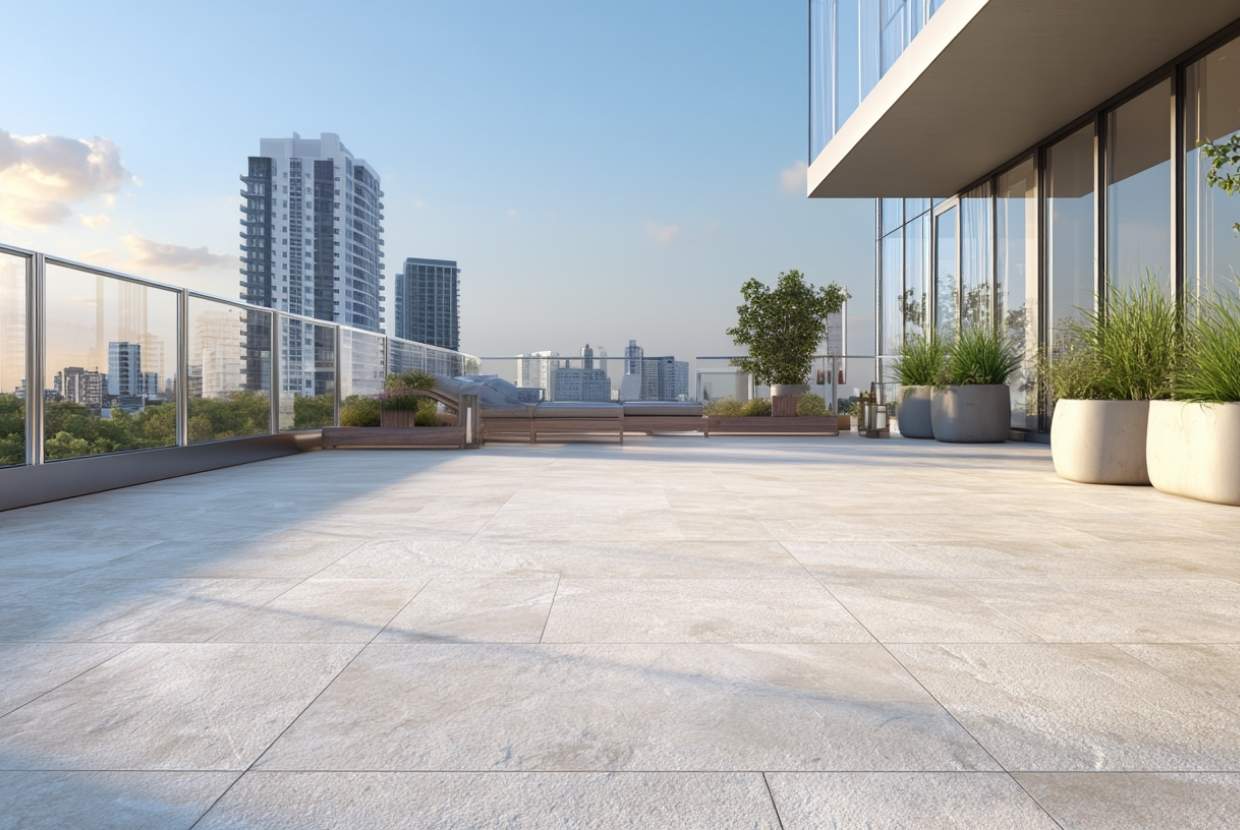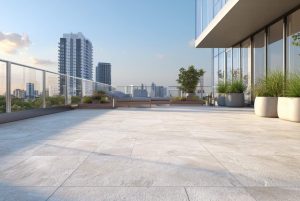When you have to deal with an uneven floor—whether at home, in a business, or anywhere else—it's not uncommon to wonder how to smooth a rough floor without getting into trouble. Because yes, at first glance it may seem like just an aesthetic issue, but in reality it goes much deeper. A floor with unevenness or roughness can cause you to trip, a floor covering won't fit properly, or materials to deteriorate prematurely. And, honestly, nobody wants that.
The good news is that there are solutions. Several, in fact. It all depends on the type of surface: concrete, wood, tile, stone... Each one has its own unique characteristics, and knowing the available options can save you time, money, and more than a few headaches.
Why is it important to know how to smooth a rough floor?
Sometimes the cause is poor initial work, other times, it's simply the passage of time. It could also be that the surface was finished with a "decorative" texture that's no longer practical. The fact is, knowing how to smooth a rough floor is not only useful, but quite necessary in many cases.
- On the one hand, it improves the overall appearance of the place. And that's always appreciated.
- It provides security. Fewer trips, fewer scares.
- It helps make laying vinyl, ceramic or parquet much easier.
- Makes the new coating last longer.
- And, something that often goes unnoticed: it makes cleaning much easier.
What if the floor is concrete?
In this case, there are several ways to get it right. One of the most common is to apply cementitious self-leveling compound. This product is spread over the prepared surface and corrects uneven surfaces quite effectively.
Another very practical option is mechanical polishing, performed with machines equipped with diamond discs. It's used to smooth out more pronounced imperfections or remove residue left over from the setting process. If the floor is severely damaged, it may be necessary to combine both methods: first polishing and then self-leveling. This way, it's ready for any type of flooring you want to put over it.
Preparation matters (more than it seems)
A fairly common mistake is trying to fix a floor without properly preparing the base. And of course, it usually doesn't turn out well. Therefore, before applying any product, the basics should be:
- Clean well: remove dust, grease, construction debris, etc.
- Check for moisture (especially on concrete floors).
- Cover fissures or cracks with suitable mortar.
- Use a primer to help the product adhere well.
- And respect the drying times. This seems obvious, but it's overlooked more often than it seems.
What if the floor is wooden?
Here's where things change. For wood, the most effective approach is usually a thorough sanding. This is done with specific machines that remove the top layer until a smooth surface is left. Small imperfections are then filled with a filler of the same or a compatible shade, and the finish is finished with a varnish, oil, or sealer.
Now, if the wood is too damaged, sometimes there's no other option than to reinforce it by placing a board on top, especially if you're going to install another type of flooring on top.
Tile or stone floors: can they be smoothed?
Yes, although it depends on the condition they're in. For these cases, the most common approach is polishing with abrasive machinery, which is done in stages until the desired result is achieved: satin, glossy, or more matte, depending on your preference.
Another option is to use self-leveling products on tile or stone, but in this case, it's essential to apply a special primer for non-porous surfaces. If done correctly, this creates an ideal base for applying microcement, vinyl, or whatever else you have in mind.
Microcement, an option that is gaining more and more ground
If you're looking for something practical and aesthetically pleasing, microcement can be a great option. It's applied directly over the old floor and corrects many of the irregularities. It also has a seamless finish (no joints), is pigmentable, and blends well with many decor styles.
It doesn't raise the floor level too much, which avoids having to cut doors or redo baseboards. In other words, it transforms without having to undertake major renovations. Sounds good, right?
Security: not a minor detail
Whether sanding, polishing, or applying chemicals, safety must not be neglected. The fine dust generated, especially during sanding or polishing, is not exactly harmless. Therefore, it is advisable to use:
- Mask with filter.
- Industrial aspiration.
- Glasses and gloves.
- And ventilate the space well if you are working indoors.
Things that often go wrong (and are best avoided)
There are common mistakes that can be solved if you act with a little care. For example:
- Applying self-leveling over a damp base is a bad idea.
- Skipping primer. Result: the product lacks adhesion and eventually peels off.
- Using too much product. It takes longer to dry and causes cracking.
- Sanding wood without the proper equipment, which leaves ugly marks.
- Not respecting the drying times between steps. And that's when problems arise.
How do you know which is the best option?
To choose the right way to smooth a rough floor, there are several things to consider:
- What type of floor do you have now?
- How rough it is (sometimes it looks worse than it really is).
- What covering do you plan to put on next?
- And, of course, how much time and money you want to invest.
For example, if you have a concrete floor with many defects, you'll probably need polishing and self-leveling. On the other hand, with wood, a thorough sanding is sufficient (unless it's severely damaged). And if you want something quick and modern, microcement may be the best option.
At Projectes Sastre we are specialists in floor polishing in Mallorca.
If you're looking for someone who can take on the job seriously, Projectes Sastre can help you. We specialize in floor polishing in Mallorca, and we have both the experience and the technical team to leave your pavement in perfect condition.
We work in homes, businesses, and all kinds of spaces, always adapting to the needs of the space and taking care of every detail.
Interested in learning more? Let's talk anytime. We can discuss your situation and tell you how to leave that rough floor smooth, safe, and with the finish you've envisioned.




